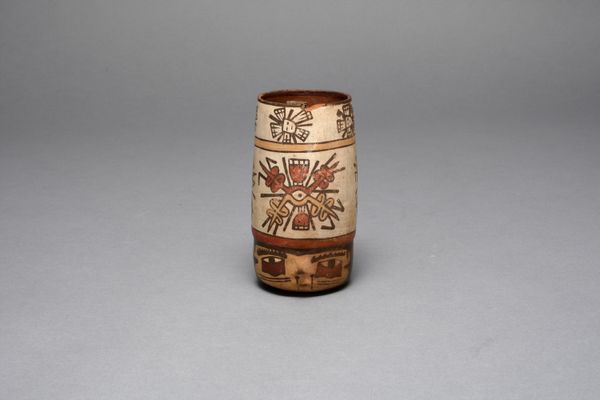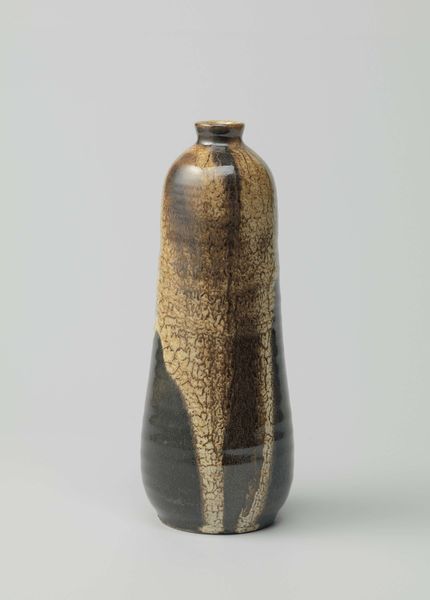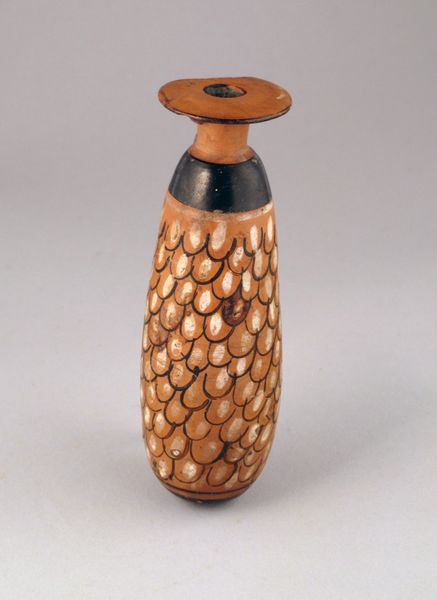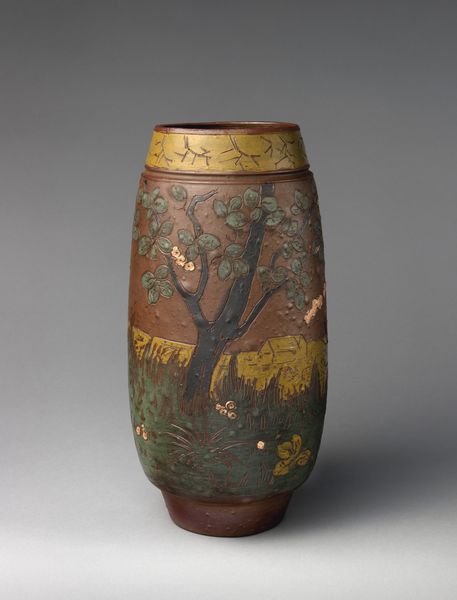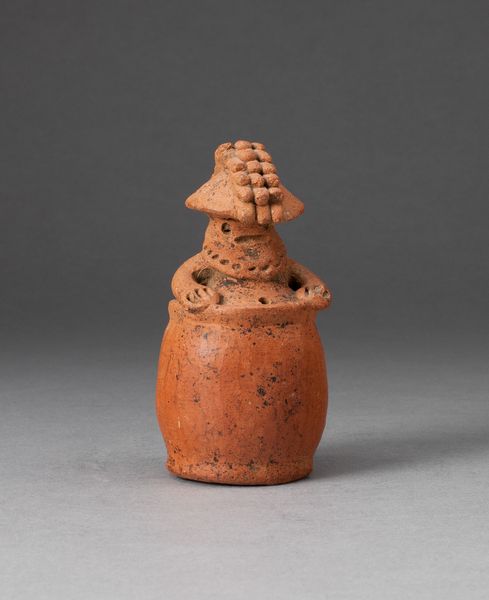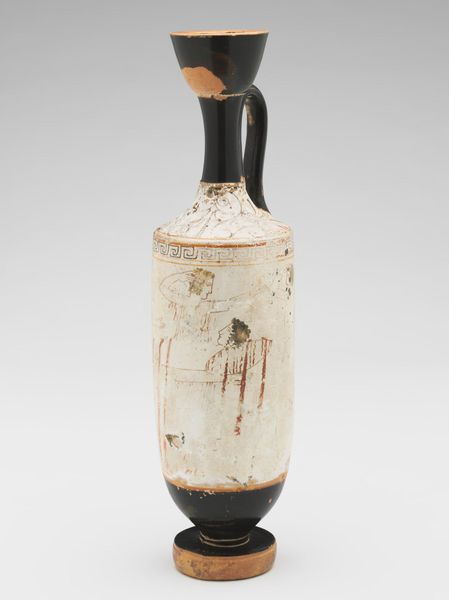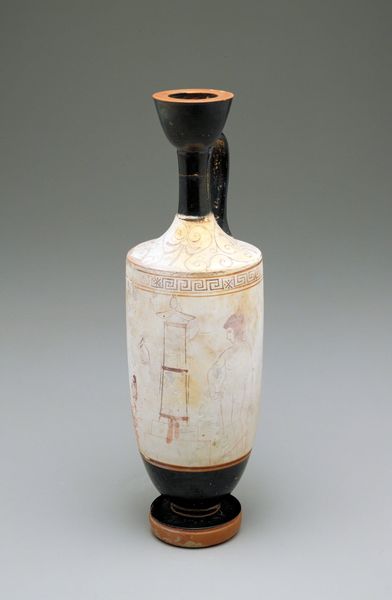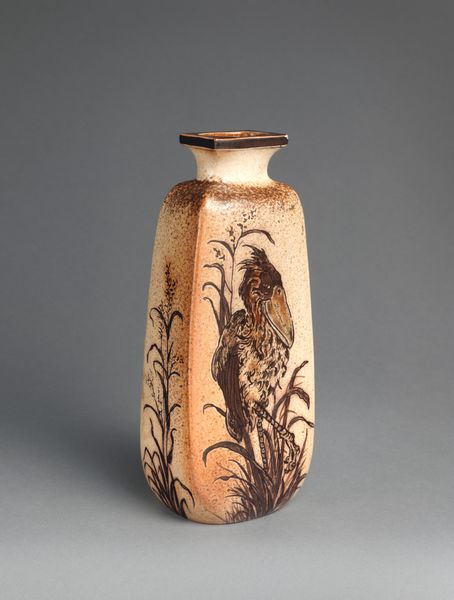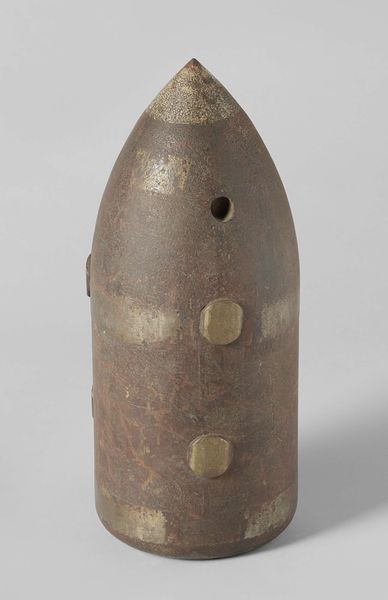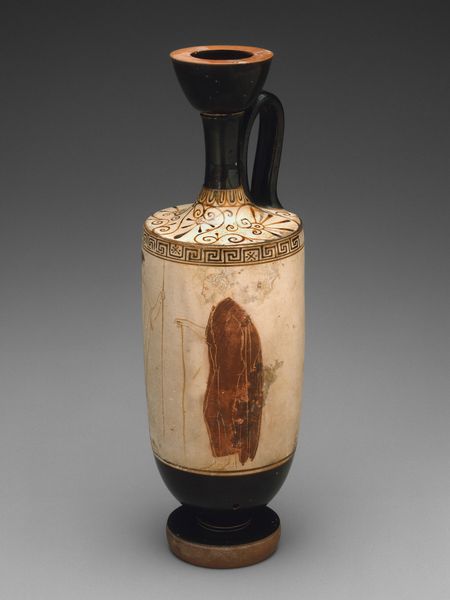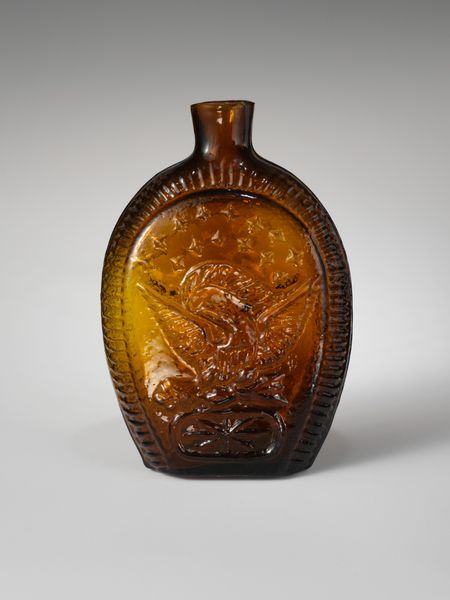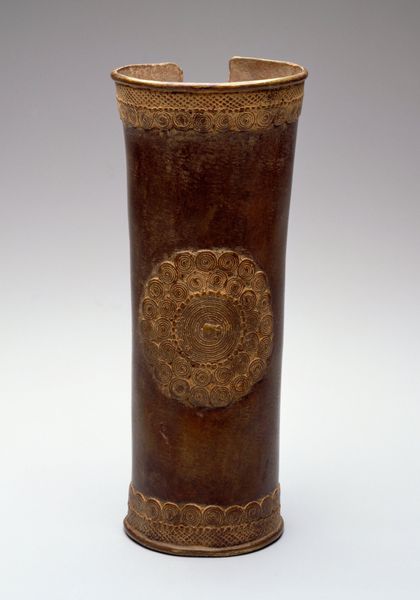
ceramic
#
medieval
#
asian-art
#
ceramic
Dimensions: H. (with lid) 6 in. (15.2 cm); Diam. 1 7/8 in. (4.8 cm); Diam. of rim 1 1/8 in. (2.9 cm); Diam. of base 1 1/4 in. (3.2 cm)
Copyright: Public Domain
Editor: So here we have Nonomura Ninsei’s "Tea Caddy, named Tall (Seitaka)," made sometime between 1650 and 1699. The material is ceramic, and I immediately get a sense of the object’s careful, vertical composure. What’s your take when you look at it? Curator: It whispers stories, doesn’t it? It's a world within a tiny pot, dreams swirling inside a tall caddy, much like steam from hot tea itself. Picture the artist's hands shaping this earthy vessel. Now, notice that band of different-colored clay near the bottom: What feeling does it give you? Editor: Stability, I suppose? Like the vessel is confidently standing on the Earth. But also it provides contrast? Curator: Precisely! Ninsei wasn’t just crafting a container; he was playing with textures and visual weight. The glazing that looks almost drippy, too: Do you feel like the artist was totally controlling everything here, or was he embracing the unexpected? Editor: Definitely embracing the unexpected. It's earthy, maybe even a little rough around the edges. It doesn’t seem overly polished or precise. Curator: Exactly! I see that surrender as part of the art itself, welcoming chance and celebrating the natural process. A dialogue between intention and raw material. And of course, within Japanese culture, it’s about quietude and reflection. Editor: So, even the "imperfections" are kind of the point? I guess that ties into Wabi-sabi aesthetics, right? Seeing beauty in the flaws... Curator: Perfectly put! Finding profound elegance in what others might overlook. Which makes sipping from a tea caddy much deeper than just drinking tea. Now I see it! It’s about the ritual, the presence. It also reminds us that nothing ever remains the same.
Comments
No comments
Be the first to comment and join the conversation on the ultimate creative platform.
